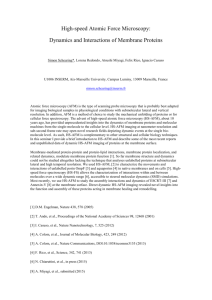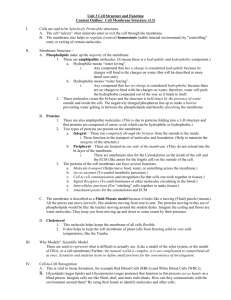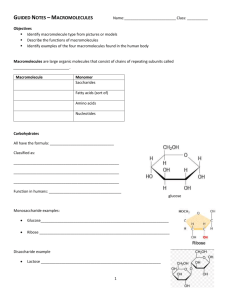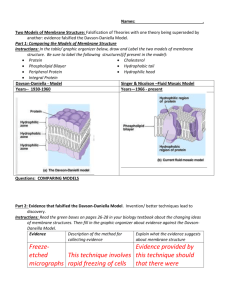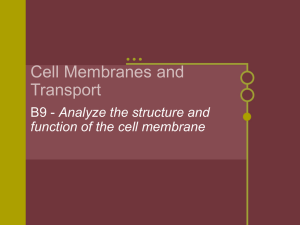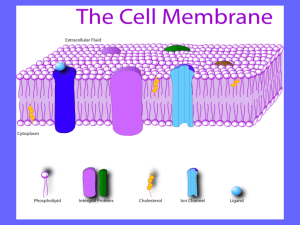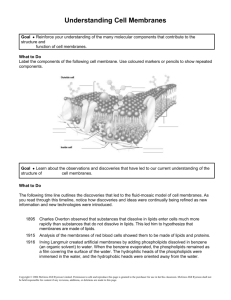1.3 Membrane structure
advertisement
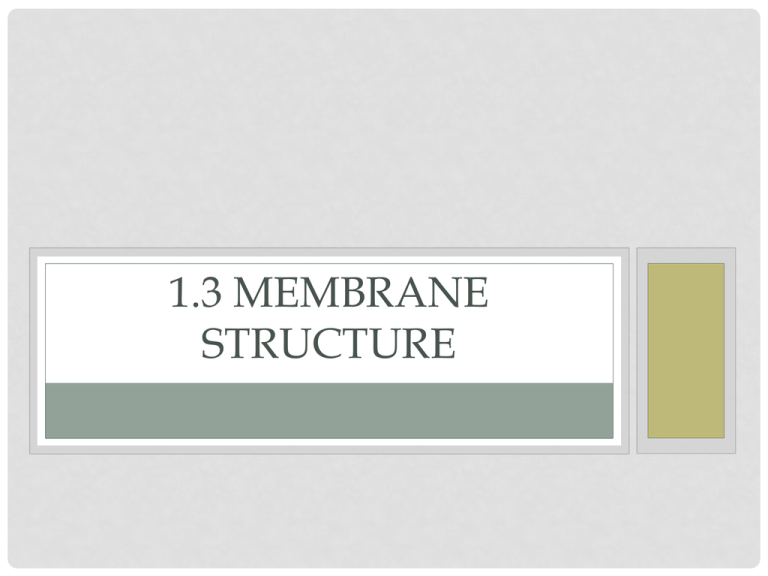
1.3 MEMBRANE STRUCTURE PHOSPHOLIPIDS Phospholipids are both hydrophilic and hydrophobic, they are amphipathic. Phosphate group = hydrophilic. Hydrocarbon chains = hydrophobic. PHOSPHOLIPID BILAYER MODELS Gorter & Grendel, proposed a bilayer. Davson & Danielli, proposed layers of proteins. High magnification electron microscopes. Evidence of proteins. Singer & Nicolson, peripheral/integral proteins. Fluid mosaic model. FLUID MOSAIC MODEL SKILLS Analysis of evidence from electron microscopy that led to the proposal of the Davson-Danielli model. Analysis of the falsification of the Davison-Danielli model that led to the Singer-Nicolson model. FALSIFICATION OF THEORIES Who proposed this model? Davson & Danielli Evidence proved this theory • X-ray diffraction studies • Electron microscopy etc. FALSIFICATION OF THEORIES Who proposed this model? Davson & Danielli In 1950’2/60’s evidence appeared that DID NOT fit the model. • Freeze-etched electron microscopy • Extracting & analysing membrane proteins • Fluorescent antibody tagging MEMBRANE PROTEINS MEMBRANE PROTEINS Integral Peripheral Usually hydrophobic on the Usually hydrophilic. surface. Embedded in the hydrocarbon chains in the centre of the membrane. Usually attached to the surface of the integral proteins. If they have hydrophilic parts, these will appear outside the membrane (transmembrane). Usually have a single, HC chain which can be inserted into the membrane = anchor. MEMBRANE PROTEINS CONT. Functions Hormone binding sites e.g. Insulin. Immobilized enzymes, active site on the outside of enzymes (small intestines). Cell adhesion - form tight junctions between cells. Communication e.g. neurotransmitter receptors. Protein channels for passive transport of materials. Active transport, pumps use ATP to move substances across the membrane. WHAT DO THESE HAVE IN COMMON? CHOLESTEROL Facts Type of lipid Categorised as a steroid Amphipathic Hydrophobic HC ‘tails’ Hydrophilic hydroxyl group (attracted to phosphate groups on membrane). • Up to 30% of lipid in the membrane can be cholesterol. • • • • • Functions Fluidity of the membrane Cholesterol ‘breaks up’ phospholipid arrangement increase in fluidity. BUT it can restrict movement. Help membranes to curve (due to its shape. TIE-DYE MILK EXP. • Record qualitative results in a table. • Write a short paragraph to explain your observations. • Method available on moodle. • Think: Safety!

